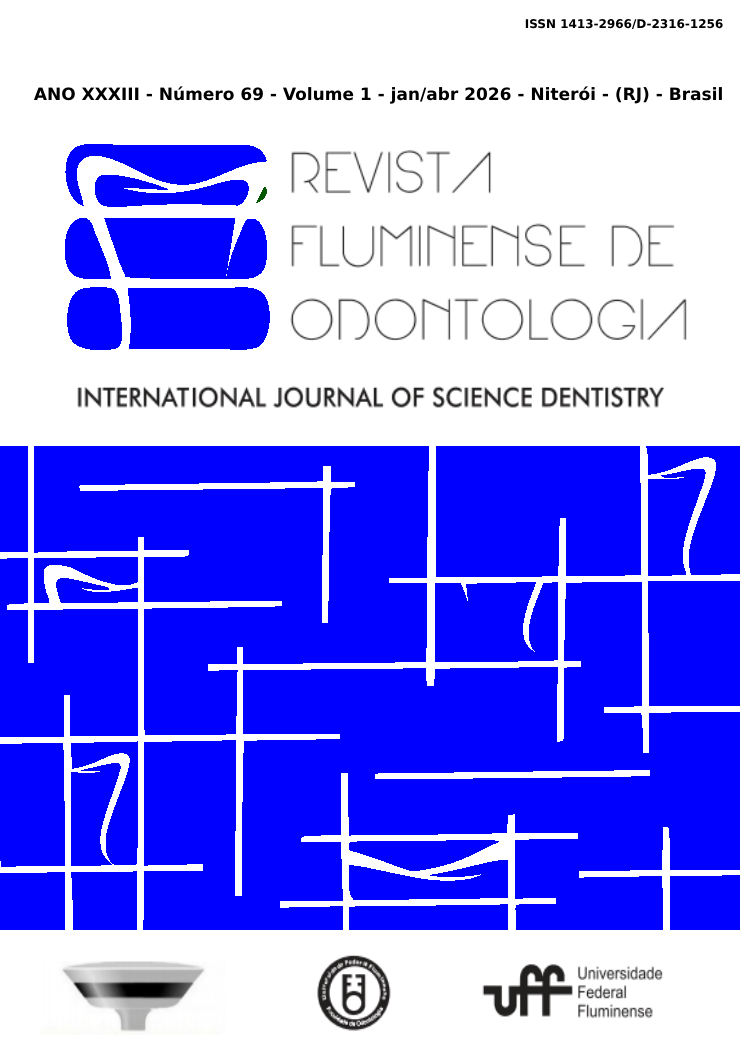Prevalence of developmental defects of enamel in children treated at a pediat-ric clinic of the Federal University of Amazonas
DOI:
https://doi.org/10.22409/ijosd.v1i69.65823Abstract
To evaluate the prevalence of developmental defects of enamel (DDE) and their association with sociodemographic characteristics and health conditions of children aged up to 12 years who attended a university dental clinic in Amazonas in 2019–2023, 190 children's medical records were examined. The dependent variable (presence of DDE) and the independent variables (sociodemographic and health variables) were collected and evaluated using descriptive analysis, the Shapiro-Wilk test, and the Prevalence Ratio (PR). Pearson's chi-square test or Fisher's exact test was also applied, with a significance level of 5%. The prevalence of DDE found was 22.1%, with MIH, dental fluorosis, and hypoplasia being the most frequent types. The majority of children with DDE were male, aged 6 years or over, from the East Zone of Manaus, whose monthly family income was less than two minimum wages, and who used piped water. There was no statistically significant association between the sociodemographic variables investigated and the occurrence of DDE, except with the participants' area of residence (p=0.031). When associating the presence of DDE with pre-, peri- and postnatal variables, only prematurity demonstrated a positive association with the occurrence of DDE (p=0.038). Given the moderate prevalence of DDE found, we suggest that the academic community engage more in establishing diagnostic protocols and preventive and curative measures.
Keywords: developmental defects of enamel, child, prevalence.





